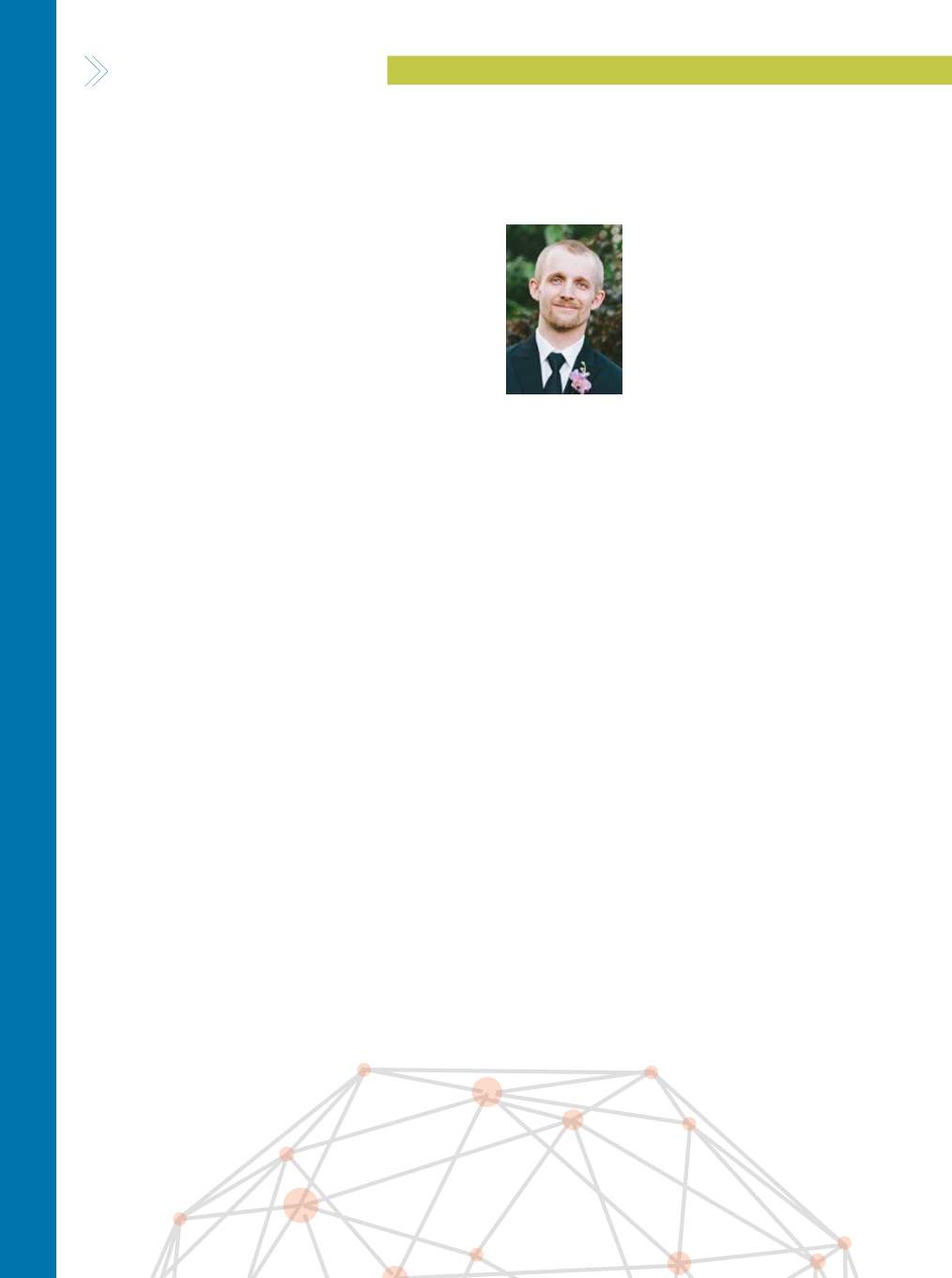

HIGHL IGHTS
A D V A N C E D M A T E R I A L S & P R O C E S S E S | O C T O B E R 2 0 1 6
5 4
VOLUNTEERISM COMMITTEE
aluminum hydride, and the design of low alloy steels for
coal gasification and liquefaction vessels.
What are you working on now?
My current research relates to laser-sustained nitrogen
and argon plasmas and their interactions with metals, par-
ticularly titanium and its alloys. The potential for develop-
ing hard nitride coatings is being explored.
How many people do you work with?
Within the department, I workwith a faculty and staff of
60 people, approximately 35 visiting scholars per year, and
a student body of up to 320 undergraduates and graduate
students. However, as ESM teaches all the service mechan-
ics courses across several colleges, we teach mechanics to
approximately 4400 students per year. Our research activ-
ities involve extensive collaborations with Penn State’s
Research Institutes and Colleges, and with numerous
universities across the globe. It is becoming increasingly
important for students to have international experiences
that will prepare them to address the grand challenges fac-
ing our global society.
If a young person approached you for career advice
about pursuing engineering, what would you tell them?
An engineering background provides a very strong
foundation for whichever career you decide to pursue.
Engineering is not just a pathway to industry or academia,
it underpins the professions (medicine, business, law, and
entrepreneurship), leadership positions in government,
humanitarian organizations, entertainment, and public ser-
vice. We need to see more engineering students entering
the fields of politics and public policy too.
Hobbies?
Reading, hiking, and archaeometry.
Last book read?
“The Warmth of Other Suns: The Epic Story of Ameri-
ca’s Great Migration,” by Isabel Wilkerson.
ASM’s Women in Materials Engineering Committee is
actively seeking candidates for award nominations. Contact
vicki.burt@asminternational.org.
VOLUNTEERISM
COMMITTEE
Profile of a Volunteer
Ben Rasmussen,
Manufacturing Engineer, Caterpillar
Inc.—Sumter Hydraulics
Volunteers can make a serious
impact—especially when they have the
audacity to tackle larger projects. When
Ben Rasmussen was in high school and
looking for an Eagle Scout service proj-
ect, he chose a challenging one: Design and build a bridge,
earthen ramps, and retaining walls in a forest preserve area
to allow for removal of invasive species. It’s not something
just any Scout could do. But it fit him well. He still likes to
take on big challenges and use his gifts to serve others in
meaningful ways.
Rasmussen knew he wanted to be an engineer and
found his way into materials science at the University of
Illinois at Urbana-Champaign. Graduating in 2010, he was
hired at Caterpillar’s tech center in Peoria, Ill. Next, he spent
two years working for Caterpillar in Mississippi as a r
eman-
ufacturing engineer in metallurgical lab infrastructure and
salvage processes.
Two years ago, he began a new role in
Caterpillar’s Sumter, N.C., hydraulics facility. He shifted
from R&D into the fast-paced job of supporting needs in a
hydraulic cylinder manufacturing shop.
During college, Rasmussen joined his school’s Mate-
rials Advantage chapter and later the Peoria Chapter. “I
was somewhat active but not in leadership until I was
asked to take on additional roles. That really spurred my
involvement,” he recalls. He became active on the national
Emerging Professionals Committee. The group targets his
own demographic—recently out of college and beginning a
career. “We identify their needs and are the voice of younger
members,” he explains.
After his three-year committee term, Rasmussen has
now joined a cause near and dear to his heart—the national
Volunteerism Committee. “It’s at the root of everything that
keeps ASM going. We make sure volunteers are recognized
and appreciated,” he says. “This has a global impact on the
entire organization.”
















